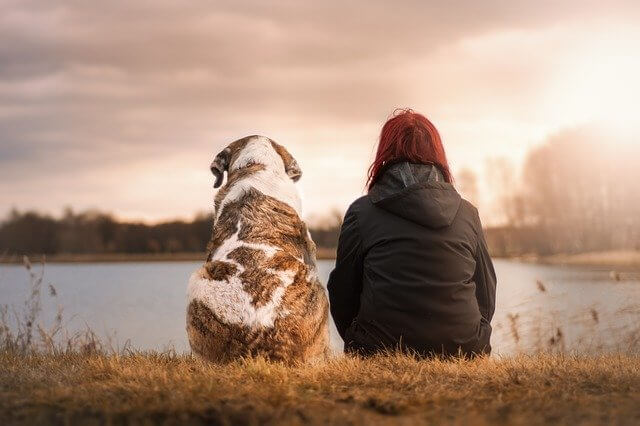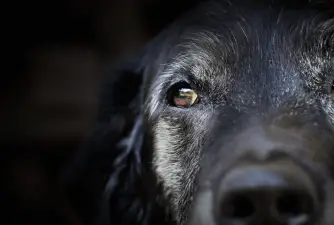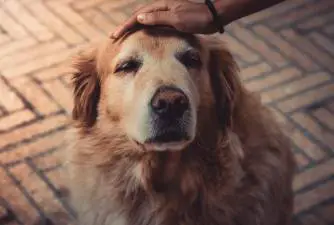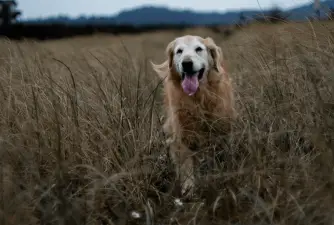7 Tips for Carrying for a Blind Dog
02.02.2022.
Unfortunately, our dogs can suffer vision impairment. There are different reasons or conditions that might cause partial or complete blindness, like cataracts or glaucoma. Nevertheless, even blind dogs can lead happy life. However, they will need our support and commitment. Dogs with vision loss will need special care, and we know we are willing to provide them with everything they need. Here are 7 tips for carrying for a blind dog.
1. Don’t panic
This is generally our first piece of advice for different health conditions in dogs. Dog owners can quickly get very (and sometimes unnecessarily) worried about their dog’s wellbeing. Sure, blindness will require you to make specific changes in your dog’s life, but it doesn’t mean your dog has to be “put down” or that you have to give them up. Remain calm, call your vet, and make sure you do all you can to help your dog. Who knows, maybe your dog’s condition can be treated or resolved. Even partial vision repairment can mean a world of difference for your dog.

2. Take your dog to the vet
Some owners think immediately there’s nothing that can be done to help their dog. That is not always true. One of the first things you should do as soon as you notice your dog’s vision is compromised is to take them to the vet. The vet will perform a complete physical examination and establish what is causing your dog’s loss of eyesight. Things like glaucoma, cataracts, or toxicities might be resolved. That means your dog’s eyesight will return, and chances are they might be completely fine.
3. “Baby-proof” your home
In this case, baby-proofing refers to making your home safe for your dog. The best way to do that is to look at your home from your dog’s point of view. Get down on all fours and start looking for things that might pose a threat to your dog’s safety. Look for spaces your dog can get stuck in, sharp edges, or stairs your dog can wander in. The dog will make a mental map based on sounds and scents to help them map the area of safe movement. However, it is up to you to make sure nothing can harm your blind dog. By looking at the world from your dog’s point of view, you might notice things you might miss looking from above.

4. Update your dog’s ID
Different things can startle a blind dog, especially if they’re seniors, so their ears aren’t as sharp as they used to be. That means the dog can quickly get scared and run off. You’d be surprised how many cases of lost blind dogs there is each year in the US. Despite your best efforts, your blind dog might wander off, so it is crucial you update their forms of ID. It is a good idea to write on your dog’s collar or harness something like “I’m blind.” That way, if something happens, your dog’s finders will know to treat them carefully. If you haven’t already, you should microchip your dog. If your dog is microchipped, make sure you update the information and include the information about your dog’s vision.
5. Training
Carrying for a blind dog will require your dog to learn new things. If you have a senior visually impaired dog, you might think they can’t learn new things. However, even old dogs can learn new tricks and commands; they just need a bit more time. Commands like “Right,” “Left,” “Turn around,” and “Stop” are crucial for blind dogs. These commands will help you keep your dog out of trouble and allow them to walk a bit more freely. Mind you, you should never let your blind dog walk without a leash. They will not see oncoming traffic or other potential dangers that can be life-threatening. Remember that training a blind dog involves plenty of praises, treats, and an overall confidence boost. That is something all blind dogs need.

6. Place things where your dog can find them
A blind dog should always be able to find three things - food, water, and shelter. Keep your dog’s food and water bowls in the same place. Preferably, you should keep it in the same place you kept it before your dog’s vision loss. If that area is not the best option for a blind dog, find a new spot and keep the dog’s bowls in one place. The same goes for your dog’s bed or crate. Blind dogs might become anxious, especially in the early days of adapting to vision loss. You should make sure your dog can always find their bed or crate. They will find comfort in that, and these things should always be available to them.
7. Use sounds
The two most important things your dog will depend on after they lose their eyesight are their sense of hearing and smell. These two things will become the primary way they navigate the dark world. You can help them navigate the house by using scent and sound cues. For example, you can switch the dog’s water bowl to a dog water fountain. The constant sound of running water will not only tell your dog where the water source is, but it will also help them get some bearings.
Blind dogs love background noises. These noises provide comfort and help them pinpoint their location. For example, try leaving a TV on, close your eyes, and spin. You will quickly know which side of the room you’re looking into without opening your eyes because the TV is your orientation point. The same goes for your dog. Leave a radio or TV on for your dog, so they can navigate more easily. Needless to say, talk to your dog as much as possible. The most significant comfort they can get is hearing their beloved owner’s calming voice.
World Dog Finder team







Share